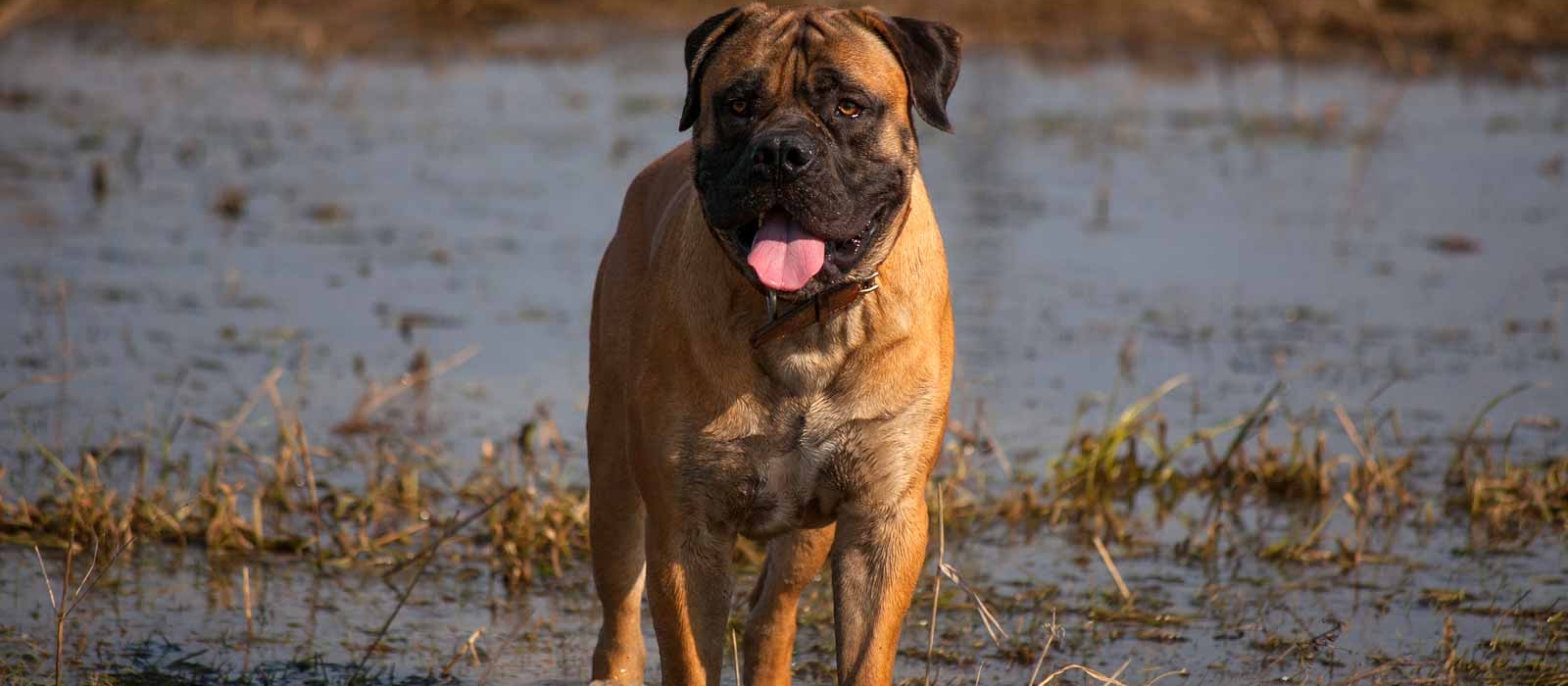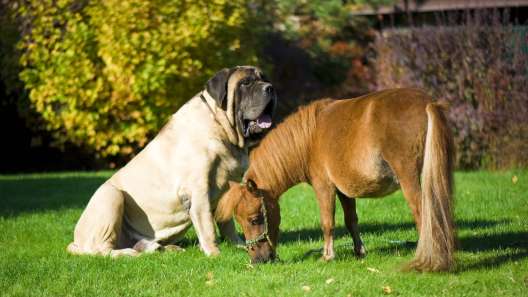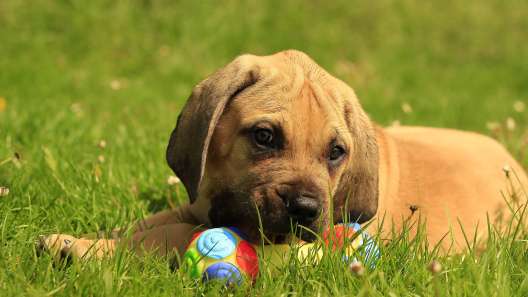-
Activity Level:
high
-
Shedding Level:
moderate
-
Grooming Level:
low
-
Trainability:
high
-
Good for Novice Owners:
low
-
Adaptability:
moderate
-
Kid/Pet Friendly:
often
-
Prey Drive:
low
-
Watchdog:
very alert
- Average Size: Giant
- Average Lifespan: 9-11
- Registered?: aca, akc
African Boerboel Dog Breed Information
Overview
Temperament
Adaptability
Health
Owner Experience
Grooming
Activity Level
Size
Life Span
Did You Know?
Originating from South Africa, the South African Boerboel is a large Molosser-type dog with a natural guardian instinct. The Molossus was a large, solidly-built dog from Ancient Greece and is the ancestor of many Mastiff and Molosser-type modern breeds.
The Borboel is thought to have been created by European settlers who arrived at the South African Cape in the mid-1600s and started crossing strong, large working breeds with native domestic dog breeds. The Boerboel, like many of the Mastiff breeds, was used as a homestead guardian, as a working farm dog, and could also work as a hunting dog.
Many Molosser-type breeds are used for search and rescue, such as the Saint Bernard and Greater Swiss Mountain Dog. The AKC recognized the Boerboel in 2015 as part of the Working Group. Boerboels can still be found working on farms and guarding them, but they are also family pets and can even be found working as therapy dogs.
The South African Boerboel is a loyal and dedicated breed. While their appearance and size can seem intimidating, the Boerboel longs for human companionship and is happiest spending time with their family. In fact, one of the facts about African Boerboels is that they are sweethearts.
Well-socialized and trained Boerboels tend to have a sensitive and docile temperament. They tend to be charming and good-natured, great with children, and very affectionate with their families. Provided they are well-socialized, they will bark to alert you of strangers and will be watchful and initially wary, but also tend to warm up once introduced.
If dogs, in general, are not properly socialized or trained, they will often become anxious and can be aggressive. Poor socialization, and the fear and anxiety that comes from it, is one of the most common causes of aggression in dogs. Socializing puppies with new people, animals, situations, etc. early and throughout their life will help in ensuring they grow into well-mannered, mature dogs.
The Boerboel is best suited for homes with fenced yards where they can roam freely. They are not recommended for dog parks where other dogs might challenge them or for being off-leash outside of secure areas.
They aren’t high-energy dogs, but they still need plenty of daily exercise and mental stimulation to be happy and healthy. Because they grow into one of the largest dog breeds and get bored easily, they are generally not recommended for apartments.
African Boerboels do well in many climates, but are sensitive to very hot weather and also to the cold. If your area has harsh winters, you may need to pick up some winter dog products to keep your Boerboel warm while out on walks. They also do not like to spend a lot of time alone. In addition to getting bored easily, they also are happiest being around their favorite humans.
Potential health concerns to be aware of in a Boerboel include hip dysplasia, elbow dysplasia, entropion, ectropion, and heart disease. There have also been some appearances of juvenile epilepsy in the breed in recent years. Good breeding practices make a big difference in the health of puppies.
Reputable breeders will screen their dogs to avoid passing preventable issues to puppies. Make sure you ask about the health and genetic history of both parents. You can also ask about any health tests or clearances that have been done. The National Breed Club recommends a hip evaluation, elbow evaluation, and cardiac evaluation at a minimum.
Although these dogs are intelligent and pick up well on training, they are not recommended for novice owners. Based on the size, power, and protective instinct of this breed, an owner with experience is recommended. Socialization and consistent training early on are essential for any dog, especially for protective and territorial breeds.
Boerboel puppies can sometimes seem easygoing and relaxed. However, it is important that their training does not become relaxed. These dogs need structured and long-term obedience training and it needs to be started and consistent at a young age.
African Boerboels have a short, dense coat and will shed moderately year-round. Weekly brushing and the occasional bath as needed are usually enough to keep this dog’s coat healthy and looking great. A soft-bristle brush and a grooming mitt are good types of dog grooming brushes to have on hand.
In addition to coat care, you will also need to take care of your African Boerboel’s nails, ears, and teeth. Nail trims once or twice monthly are usually enough to keep nails from growing too long and causing issues. Weekly ear checks and careful cleanings when needed can help prevent ear infections. Daily dental care in addition to cleanings at the vet when needed can help prevent dental diseases later in life.
African Boerboels may not be high-energy dogs, but they do tend to have a higher energy level than most of their Mastiff cousins. Daily walks plus some playtime and some time to run are usually enough for this dog. Keep in mind that these dogs were bred to be workers, so keep them active and give them a job to do for a happy and well-adjusted dog.
Fully-grown African Boerboels usually stand 22-27 inches tall and weigh 150-200 pounds.
Boerboels generally live for 9-11 years on average.
The South African Boerboel is also known as the Boerboel, African Boerboel, and the South African Mastiff.








